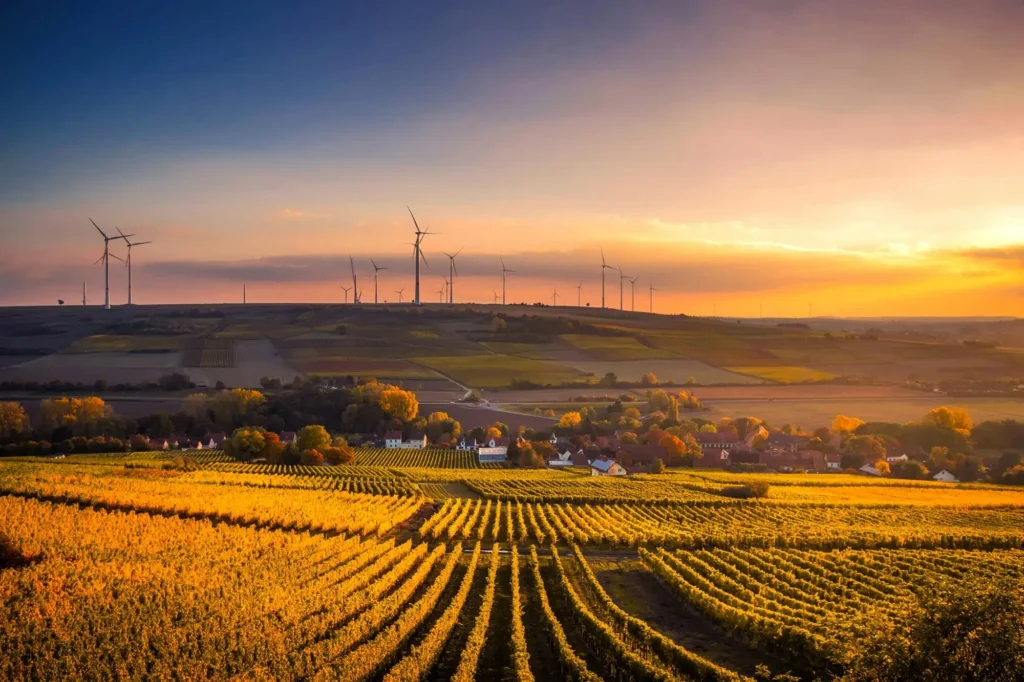The Largest Wind Farms in Texas
5 minute readDiscover how Texas dominates U.S. wind power with massive utility-scale projects.
Home > Learning Center > Can Wind Turbine Blades Be Recycled?
2 minute read • Last update January 2025

Yes, it is now possible to recycle wind turbine blades, but most of the solutions for recycling or reusing the blades have been developed in recent years. This means that many of the first wind turbines, developed and implemented in the 90s and decommissioned in the last decade, ended up in landfills.
The average lifespan of a wind turbine blade is 20 years. If current recycling rates are maintained, it is estimated that 2.2 million tons of decommissioned wind turbine blades could end up in United States landfills by 2050.
According to a 2015 report from the National Renewable Energy Laboratory (NREL), wind turbines are made primarily of five materials: steel, fiberglass, iron, copper, and aluminum. The blades themselves are made primarily of fiberglass, which is non-biodegradable.
Typical land-based wind turbine blades are over 170 feet long, while those that are placed in the ocean can be even bigger up to 350 feet long. So, it’s not only the fiberglass makeup of the blade that makes it difficult to recycle, but also the enormous size.
A few highly specialized companies and organizations have developed processes to recycle wind turbine blades, but they have not yet become widespread.
Here are some examples of how wind turbine blades may be recycled:
In order to turn wind turbine blades into cement, Veolina North America cuts the blades into smaller pieces. Then, the smaller pieces are shredded into even smaller chunks that you could pick up with a single hand.
Then, these are shipped to customers who blend the fiberglass chunks with other materials to make cement.
As of 2022, this process had been used to convert over 2,000 decommissioned blades into cement.
Another company, Global Fiberglass Solutions based out of Sweetwater, Texas, converts shredded wind turbine blades into pellets. The pellets can be used to make flooring panels, shipping crates, railroad ties, and other sturdy industrial products.
The company Carbon Rivers takes a much different approach than shredding the blades–they use pyrolysis. Instead, they bring the fiberglass to intense heat in an oxygen-deprived environment. This process separates the organic components of the blade from the inorganic, and the organic components are transformed into materials called syngas and pyrolysis oil.
Syngas and pyrolysis oil can be used for energy production, and the separated inorganic materials can be reused in the manufacturing of new products.
For many years, the difficulties surrounding the recycling and reuse of wind turbine blades have been an unfortunately ironic reality of the expansion of wind energy around the globe.
As technologies progress and scale, the future of wind energy looks a little brighter. No longer will renewable wind energy lead to an unsustainable end for the many thousands of wind turbine blades.
Graham Lumley, Digital Marketing Manager at BKV Energy, leads digital and traditional marketing strategies, focusing on educating Texans about the state's deregulated energy market. With over 8 years of marketing experience, he creates content to help consumers understand and save on their energy bills, bringing a fresh and dynamic approach to the industry.

Discover how Texas dominates U.S. wind power with massive utility-scale projects.

Get $50 off your electric bill!
Use code BKVEJOINUS50
Enter your zip code to shop BKV Energy's affordable, fixed-rate Texas electricity plans. Use the promo code for $50 off your electric bill.